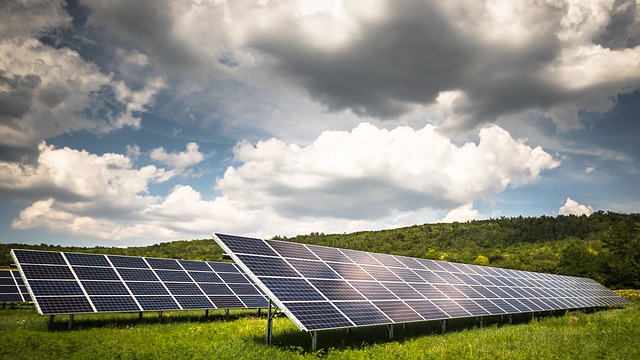Our sun is about halfway through its lifetime, and yet, it still has five billion years to go. While this magnificent star burns and illuminates the earth, it shines a whopping 173,000 terawatts of solar energy onto the planet. This energy is inexhaustible and renewable, at least in the sun’s remaining billions of years.
Solar power through the use of solar farms can change the landscape of energy. It’s not uncommon for houses to boast solar panels on their roofs. Nowadays, you have various solar-powered devices with charging on the go.
Harvesting energy from something as ubiquitous as sunlight seems so ingenious.
But how does solar power work? Get to know the nitty-gritty of this sustainable power grid, down to the atom. Read on to find out more!
What is Solar Energy?
The sun continuously emanates energy. These rays of sunlight illuminate halves of the earth, earning the worship and adoration of mankind as early as the 14th century BC.
Nuclear fusion takes place in the sun. Take a trip back to memory lane and recall the hydrogen atoms and helium atoms from your chemistry class. Like most stars, the sun is a ball of colliding hydrogen atoms and helium, held together by its own massive gravity.
The Science Behind Solar Energy
Hydrogen atoms, with an atomic number of one, clash with other hydrogen atoms in the star. The fusion of these two hydrogen atoms creates helium, with an atomic number of 2. Along with helium, this fusion reaction produces immense amounts of energy.
The resulting nucleus of helium weighs less than the original masses of hydrogen. Einstein’s famous E=mc2 equation supports this phenomenon, which demonstrates the conversion of mass into energy.
The mass has to go somewhere to stay conserved; in this case, it transforms into energy. Due to the intense nature of nuclear fusion, it’s a lot of energy.
How much energy, you might ask? Trillions of watts.
All this energy from violent collisions of atoms forms heat and light. The sunlight that touches the earth is a combination of 54% heat, 45% visible light, and roughly 1% ultraviolet.
With greater leaps in science and engineering, we have a better grasp of the sun’s potential, and we can now harness its power. Solar panels use visible light to harness the photovoltaic effect.
What is the Photovoltaic Effect?
The photovoltaic effect is a chemical and physical phenomenon. This effect refers to when light generates a voltage.
Energy conversion isn’t magic, and it needs to go through pathways. A photovoltaic cell is a nonmechanical device. It acts as a conversion center of visible light to electricity.
Photovoltaic cells are nonmechanical in the sense that electrons are the only ones in motion. You can compare this to a motor powered by fossil fuels.
The effect is the process of a photovoltaic cell generating current when struck by sunlight. The process itself is simple. To understand how light becomes electricity, you have to know what comprises a solar cell.
What are Solar Panels Made of?
Solar panels are a series of solar cells working together to harvest energy. Each solar cell has a semiconductor sandwiched between two conductors.
Semiconductors are often made from silicon. Silicon is the main component of beach sand. This makes it the second most abundant element on earth, next only to oxygen.
In its crystalline form, silicon is a matrix of atoms held together by four rigid bonds. These bonds keep the electrons in place. With electrons in place, no electricity flows.
To generate electricity, a p-n junction has to exist. Solar cells accomplish this by using two different types of silicon. The two types of silicon are p-type and n-type, and they complement each other.
The creation of P-type and N-type silicon involves the addition of atoms. Choices are usually boron or gallium because they have one less electron in their outer energy shell.
Boron has one less electron than silicon to form those four bonds with each other. Because of this, p-type silicon has “holes” and a positive charge. This creates the “holes,” or vacancies, that allow the destabilization of the crystalline matrix.
Think of these holes as positively charged spaces due to a lack of electrons. Since the N-type is its complement, you may have guessed that it has an excess of electrons.
The N-type silicon has a surplus of electrons, imparting a negative charge. These charges create an internal electric field that dictates the flow of electrons. These electrons are also capable of dislodging.
The electrons don’t only dislodge, though. They need an energy source. This energy source, as you may have guessed, comes from the sun.
How Do Solar Panels Turn Sunlight into Electricity?
Similar to how plants harvest those ribbons of sunlight, solar cells do the same. Sunlight travels 93 million miles to reach the earth’s surface. Around 45% of that solar energy comes in the form of visible light.
Light isn’t a particle – rather, it’s a wave. For the sake of the physics of solar panels, think of light as containing particles of energy called photons. When enough of those energy packets strikes a silicon atom, the energy ejects an electron out of place.
Photons knock surplus electrons from their bonds, leaving a hole or vacancy in the N-type silicon. The liberated electron flows in a single direction with other freed electrons along a circuit.
When this occurs in the photovoltaic cell, the internal electric field draws the escaped electrons to the n-type silicon layer. The holes move toward the p-type layer.
The P-N Junction
The p-n junction allows the electrons to travel from the n-type silicon to the p-type silicon. The electrons cross the depletion zone. The depletion zone is where the sun doesn’t shine.
This region of the photovoltaic cell is devoid of sunlight. It also acts as the region of neutralization. The charge carriers unite in this area, where electrons fill the vacancies.
They get harvested and perform the work of electricity through an external wire. The electrons generate a direct current that is then converted to an alternate current. This alternate current is our usable energy spread along the power grid.
One silicon cell generates about 0.46 volts. Solar panels are often arranged in configurations of 32, 36. 48, 60, 72, and 96 cells. For perspective, it takes around 12 cells to charge a cell phone.
The electrons then complete their path to the N-type terminal through a conductive aluminum plate. This cycle continues since electrons are the only movement within the solar cells. What makes solar power ingenious is that sunlight propels these electrons.
This is a stark difference from electricity generated by fossil fuels. For those mechanisms, you need a movement of mechanical parts propelled by a finite source.
Solar Farms vs. Solar Panels
When it comes to composition, solar cells make up solar panels, and solar panels make up solar farms. However, it’s not only about building big.
Solar panels on your roof can convert sunlight into electricity. In turn, it can convert your electric bill to mere pennies. However impressive this is, the intent behind solar farms is far greater.
Solar farms are different from your neighbor’s solar panel roofs in the sense that solar farms are larger-scale. They aren’t for personal use or use within small communities. Solar farms target entire sectors and compete with merchant electric companies.
A solar panel farm involves thousands upon thousands of solar panels. These panels are typically arranged in rows and mounted on racking systems. Ideal locations are flat and clear land. Unused commercial land or farmland is ideal for making the most of the space.
Solar farms are far more ambitious in the size of the community they want to supply. Where it takes around 12 cells to charge a phone, you’d need a lot more to service towns. Accomplishing this task considers logistics, location, and connections to communities.
A typical solar park spans 4-5 acres of land with 4,000 solar panels. These panels can generate 850-950,000kWh of electricity per year.
Why Solar Power is Elite
Solar power rivals traditional power sources as it can provide massive amounts of energy to communities. Solar energy is a leader in sustainability and mitigating greenhouse gas emissions.
Even supposed clean energy sources like hydropower can damage the water ecosystems they’re built on. Solar is one of the leading candidates in the advent of more environmentally conscious moves toward renewable energy.
Solar Farms Hold the Secret to Renewable Energy
The continuous radiant energy from the sun generates more than 10,000 times the earth’s energy use. Yet, a large amount of it remains unused. Converting light into electricity is a feat of science imploring us to tap it.
Thank you for reading our article on the mechanism of solar farms and solar energy! Solar farms can shift the tides via the photovoltaic effect to power large communities. Broaden your horizons and stay up-to-date with the latest inventions through our blog posts!







